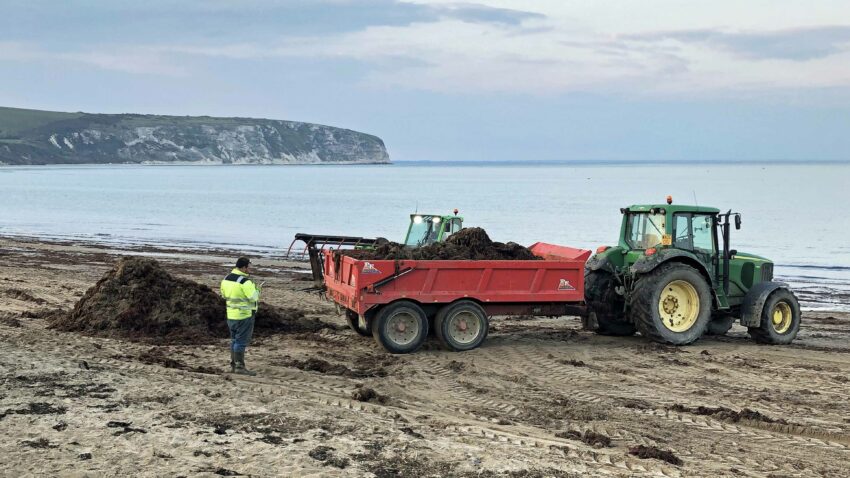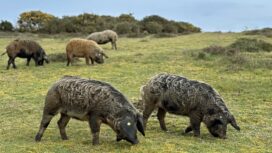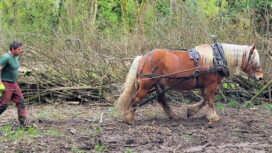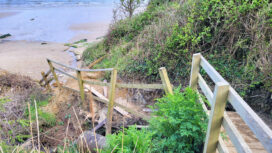After 30 years, the local farmer who removed excess seaweed from Swanage Beach during the summer season is retiring and it’s causing a dilemma for the town council.
In order to allow beachgoers plenty of sand to enjoy and to prevent it getting smelly during hot weather, seaweed that has been blown on shore by an easterly wind has been removed by farmer Paul Loudoun who’s used it on his farm as fertiliser.
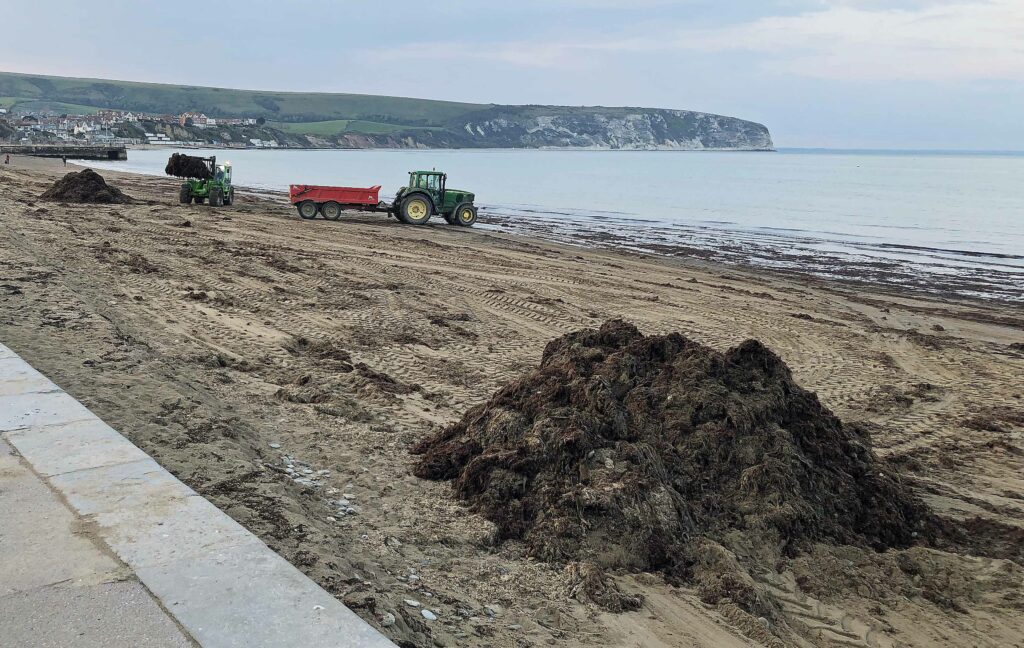
Farmer Paul Loudoun has collected excess seaweed from Swanage Beach for the last 30 years
Nutrient rich seaweed
Now Paul is retiring from the council contract and it’s proving hard to find someone who has the right credentials to provide the same service.
Many local farmers don’t want to put seaweed on their fields due to a change in agricultural policy which leaves them better off being paid to restore the natural biodiversity of their land, which the addition of seaweed would interfere with.
Seaweed is nutrient rich and high in calcium, sulphur and alginates, which is good to encourage growth, but of course, seaweed is not naturally found on Purbeck fields and heathlands.
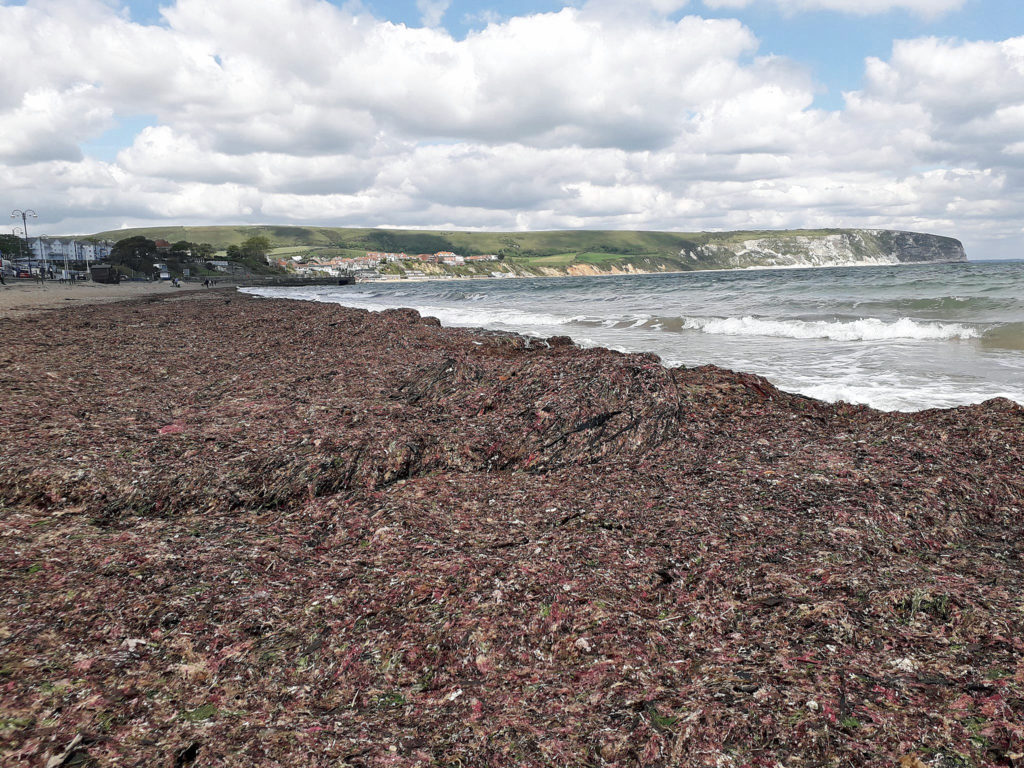
An easterly wind can suddenly deposit a huge amount of seaweed on Swanage Beach, although it can also disappear on the next tide just as easily
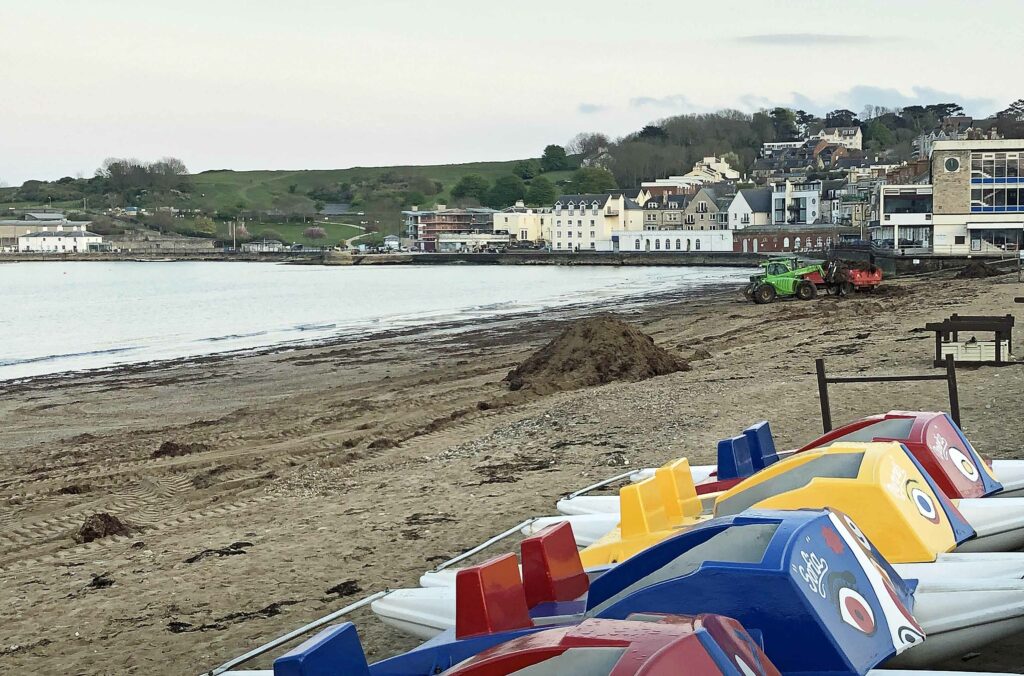
In Swanage the seaweed mainly collects on the beach between The Mowlem and the Banjo Pier, so beachgoers can usually find a seaweed free stretch if they head towards the northern end of the bay
Blue Flag beach
Swanage is a Blue Flag beach, which means that it’s managed to the highest of environmental standards and the awarding body, the Foundation of Environmental Education is advising that seaweed is left on the beach unless it’s a nuisance and if disposed of, that it’s done in an environmentally friendly way.
This means that the options to dispose of the naturally occurring seaweed are very limited and councils are being encouraged to think of other solutions.
One of the most viable options is to push it back into the sea, which is a method used elsewhere and has been done in Swanage in the past, although it requires a great deal of skill and a good knowledge of the tides.
It’s understood that nuisance seaweed in Poole Harbour is collected by boat and then taken back out to sea and released.
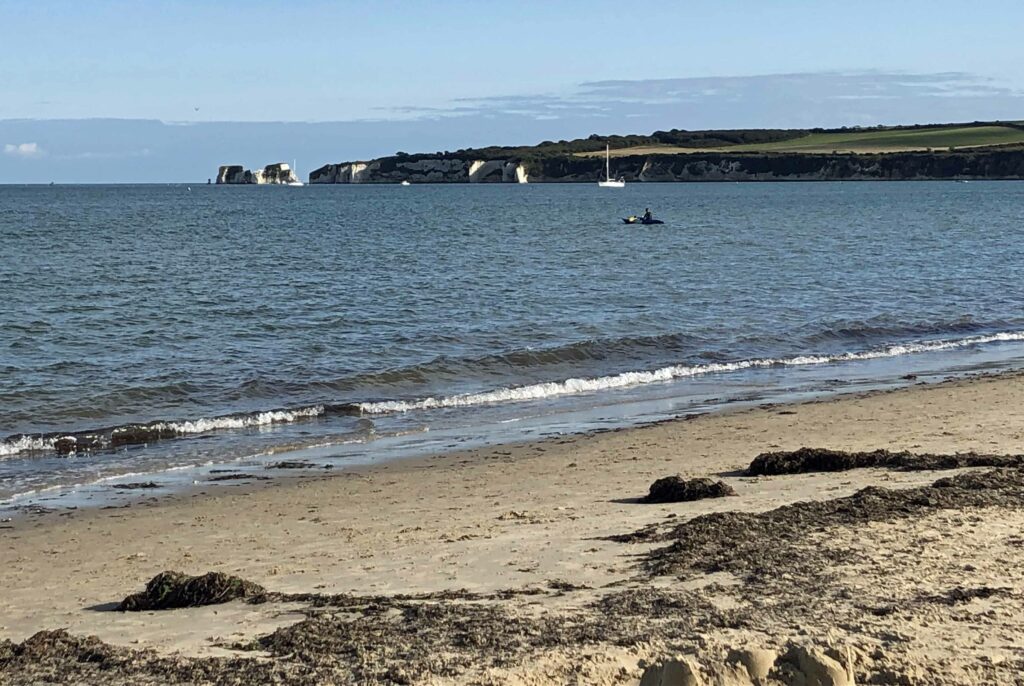
The National Trust which manages beaches in Studland leave seaweed where it settles
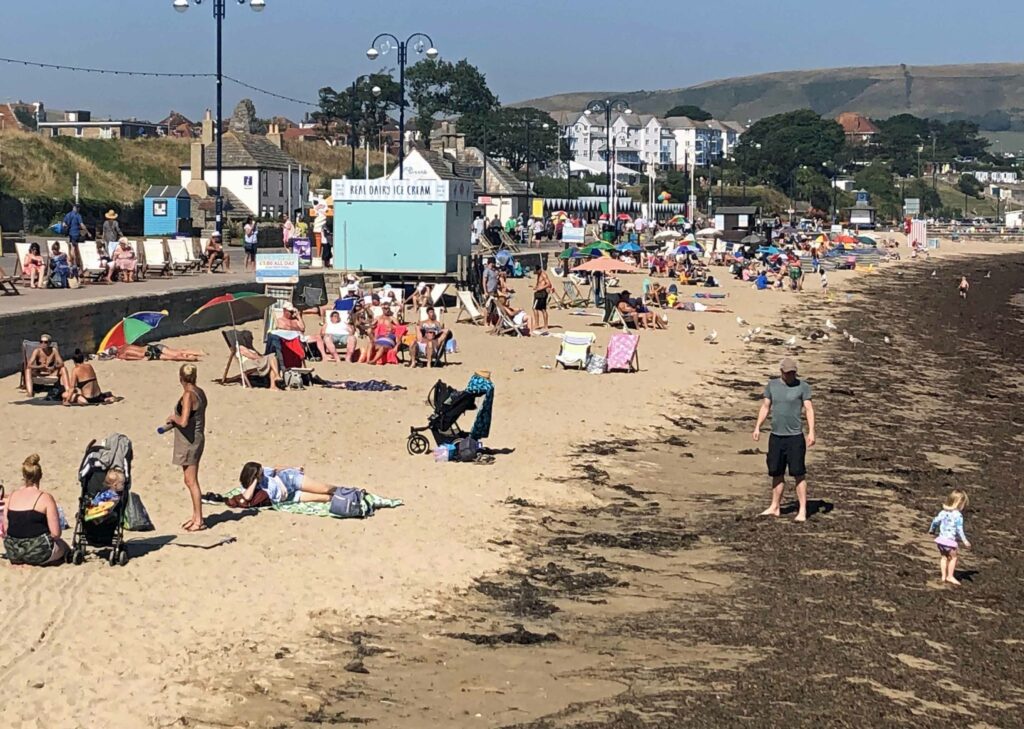
Seaweed can be tricky to navigate on busy summer days but it is a naturally occuring product of the coastal location
“Please bear with us”
At a meeting of the Swanage Town Council coastal change and beach management advisory committee on Wednesday 7th February it was proposed that a new approach would be trialled for 2024.
Chair of the advisory committee, councillor Mike Bonfield said:
“Due to the retirement of Paul and a change in environmental and agricultural policy, we’ve got to come up with a new management plan for excess seaweed on the beach during the summer. I’d like to thank Paul for all that he has done for the last 30 years and also for the help and advice that he has provided to the council.
“We’re now looking at how best we can return the seaweed back into the sea and considering our options on who could do that task. It’s going to be a one year trial to see how it goes.
“We’re just asking for everyone to please bear with us, as it may mean that the seaweed won’t be removed as quickly as in the past.”
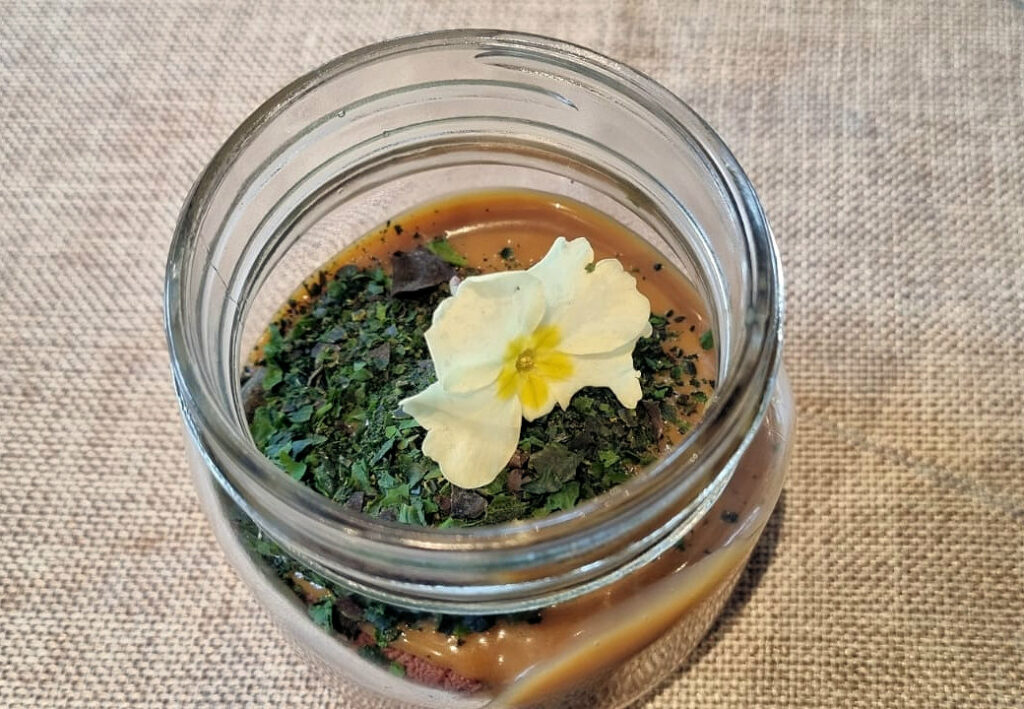
Studland outdoor company Fore Adventure runs foraging courses showing how seaweed can be used to make interesting meals including desserts
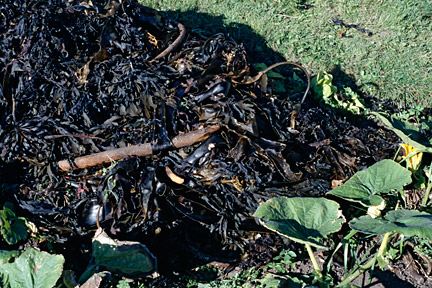
Seaweed is good for allotments and vegetable beds
Seaweed can be used by gardeners
Seaweed is popularly used in skincare products and as a food source. There’s also new products like a thin film which is created as an alternative to plastic.
However these production processes only require relatively small amounts of seaweed and are already provided for.
One of the major problems is moving large quantities of seaweed, deposited often with little warning due to changes in the tide and wind direction, and then transporting it from Purbeck.
Traditionally local residents have scooped up bags of seaweed to use on their allotments or vegetable beds and that’s still allowed for non commercial activities, so in future there may be even more opportunities for gardeners to improve their soil using Swanage seaweed.
